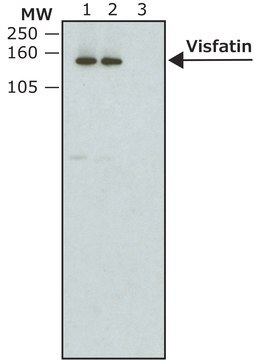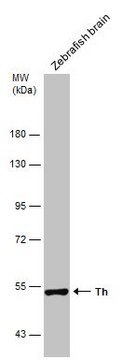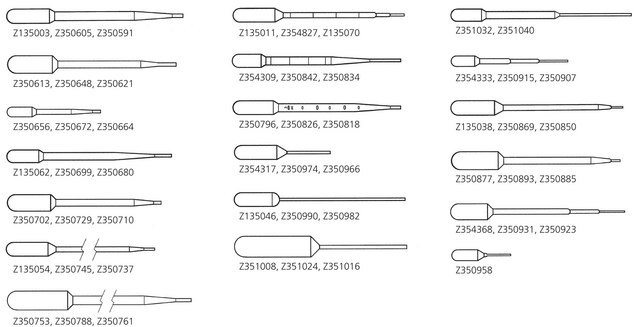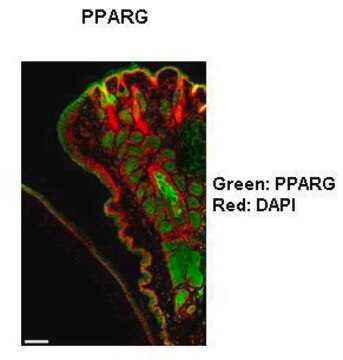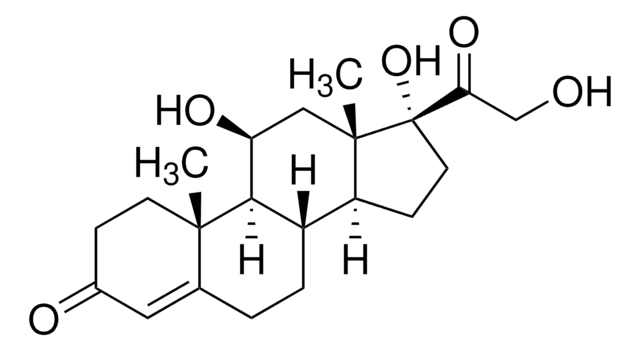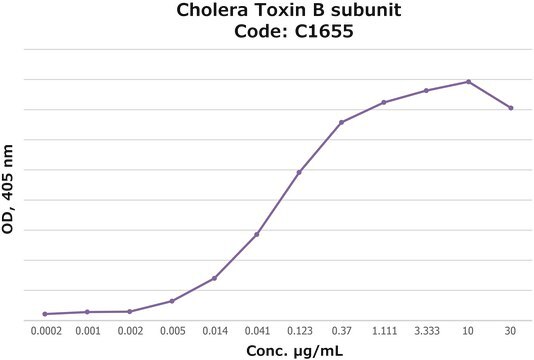General description
We are committed to bringing you greener alternative products, which adhere to one or more of The 12 Principles of Green Chemistry.This antibody is Preservative-free, produced without the harm or sacrifice of animals and exceptionally stable to allow for ambient shipping and storage if needed and thus aligns with "Waste Prevention", "Designing Safer Chemicals" and "Design for Energy Efficiency".
Click here for more information.
ZooMAb® antibodies represent an entirely new generation of recombinant monoclonal antibodies.Each ZooMAb® antibody is manufactured using our proprietary recombinant expression system, purified to homogeneity, and precisely dispensed to produce robust and highly reproducible lot-to-lot consistency. Only top-performing clones are released for use by researchers. Each antibody is validated for high specificity and affinity across multiple applications, including its most commonly used application. ZooMAb® antibodies are reliably available and ready to ship when you need them.
Specificity
Clone 1I19 is a ZooMAb® Rabbit recombinant monoclonal antibody that specifically detects Peroxisome proliferator-activated receptor gamma (PPARg ). It targets an epitope within 16 amino acids from the N-terminal region.
Immunogen
KLH-conjugated linear peptide corresponding to 16 amino acids from the N-terminal region of human Peroxisome proliferator-activated receptor gamma (PPARg).
Application
Quality Control Testing
Evaluated by Western Blotting in PC3 cell lysate.
Western Blotting Analysis: A 1:1,000 dilution of this antibody detected PPAR in PC3 cell lysate.
Tested applications
Immunocytochemistry Analysis: A 1:100 dilution from a representative lot detected PPAR in PC3 cells..
Immunohistochemistry (Paraffin) Analysis: A 1:100 dilution from a representative lot detected PPAR in human placenta tissue sections.
Note: Actual optimal working dilutions must be determined by end user as specimens, and experimental conditions may vary with the end user
Anti-PPARg, clone 1I19 ZooMAb®, Cat. No. ZRB1428, is recombinant Rabbit monoclonal antibody that specifically detects PPARg and is tested for use in Immunocytochemistry, Immunohistochemistry (Paraffin), and Western Blotting.
Target description
Peroxisome proliferator-activated receptor gamma (UniProt: P37231; also known as PPAR-gamma, Nuclear receptor subfamily 1 group C member 3) is encoded by the PPARG (also known as GLM1, NR1C3) gene (Gene ID 5468) in human. Peroxisome proliferator-activated receptors (PPARs) are members of the nuclear hormone receptor family of transcription factors that mediate a variety of cellular processes, including glucose and lipid metabolism, inflammatory responses, and regulation of apoptotic cell death. They act by binding to specific peroxisome proliferator-response elements (PPREs) on target genes. Three forms of PPARs have been described, which are designated as a, g, and d forms. They contain a DNA binding domain and a ligand-binding domain. Each form is expressed in different tissues and can be activated by different ligands, most of them being specific for one form of PPAR. PPARg is predominantly expressed in the adipose tissue and its lower expression is observed in skeletal muscle, heart, liver, and spleen. It serves as a nuclear receptor that binds peroxisome proliferators such as hypolipidemic drugs and fatty acids. Once activated by a ligand, it binds to DNA specific PPAR response elements (PPRE) and modulates the transcription of its target genes. It controls the peroxisomal b -oxidation pathway of fatty acids and is a key regulator of adipocyte differentiation and glucose homeostasis. It mediates the anti-diabetic and adipogenic actions of the thiazolidinediones Defects in PPARg have been linked to Type II insulin-resistant diabetes and hypertension. Mutations ins PPARG gene have also been linked to familial type lipodystrophy that is characterized by marked loss of subcutaneous fat from the extremities. This ZooMAb® recombinant monoclonal antibody, generated by our propriety technology, offers significantly enhanced specificity, affinity, reproducibility, and stability over conventional monoclonals.
Physical form
Purified recombinant rabbit monoclonal antibody IgG, lyophilized in PBS with 5% Trehalose, normal appearance a coarse or translucent resin. The PBS/trehalose components in the ZooMAb® formulation can have the appearance of a semi-solid (bead like gel) after lyophilization. This is a normal phenomenon. Please follow the recommended reconstitution procedure in the data sheet to dissolve the semi-solid, bead-like, gel-appearing material. The resulting antibody solution is completely stable and functional as proven by full functional testing. Contains no biocide or preservatives, such as azide, or any animal by-products. Larger pack sizes provided as multiples of 25 μL.
Reconstitution
300 μg/mL after reconstitution at 25 μL per vial. Please refer to guidance on suggested starting dilutions and/or titers per application and sample type.
Storage and Stability
Recommend storage of lyophilized product at 2-8°C; Before reconstitution, micro-centrifuge vials briefly to spin down material to bottom of the vial; Reconstitute each vial by adding 25 μL of filtered lab grade water or PBS; Reconstituted antibodies can be stored at 2-8°C, or -20°C for long term storage. Avoid repeated freeze-thaws.
Legal Information
ZooMAb is a registered trademark of Merck KGaA, Darmstadt, Germany
Disclaimer
Unless otherwise stated in our catalog or other company documentation accompanying the product(s), our products are intended for research use only and are not to be used for any other purpose, which includes but is not limited to, unauthorized commercial uses, in vitro diagnostic uses, ex vivo or in vivo therapeutic uses or any type of consumption or application to humans or animals.



